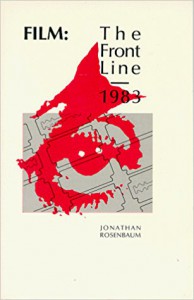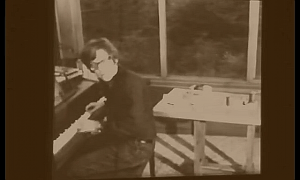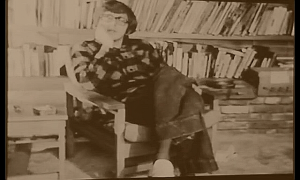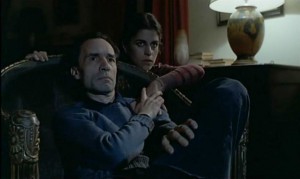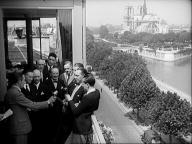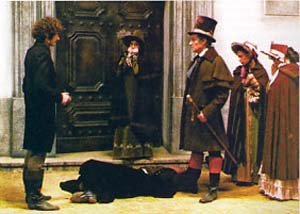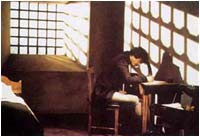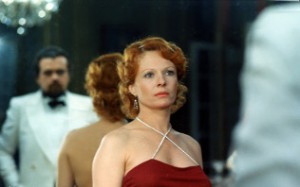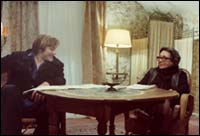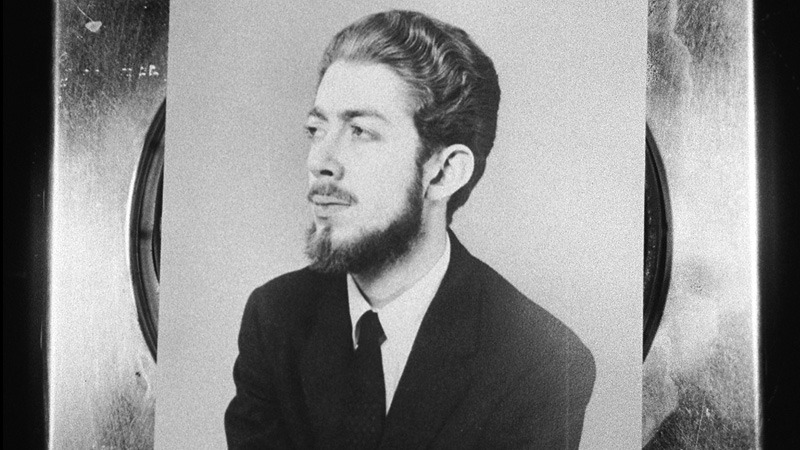My book Film: The Front Line 1983 (Denver: Arden Press), intended by its editor-publisher to launch an annual series, regrettably lasted for only one other volume, by David Ehrenstein, after two other commissioned authors failed to submit completed manuscripts. Miraculously, however, this book remained in print for roughly 35 years, and now that it’s finally reached the end of that run (although some copies can still be found online), I’ve decided to reproduce more of its contents on this site, along with links and (when available) illustrations. I’ll begin with the book’s end, an Appendix subtitled “22 More Filmmakers,” which I’ll post here in three installments, along with links and (when available) illustrations. — J.R.
APPENDIX: 22 MORE FILMMAKERS
All sorts of determinations have led to the choices of the individual subjects of the 18 previous sections — some of which are rational and thus can be rationalized, and some of which are irrational and thus can’t be. To say that I could have just as easily picked 18 other filmmakers would be accurate only if I had equal access to the films of every candidate. Yet some of the arbitrariness of the final selection — particularly in relation to the vicissitudes of American distribution and other kinds of information flow — has to be recognized. So, I have listed below 22 more figures I would like to have picked — if this were a perfect universe where all cultural artifacts were uniformly visible and available, as The New Yorker and The Village Voice (among others) pretend. Once again, the order is, approximately, alphabetical.
TOM BRENER. As I suggested in the section on Jonas Mekas, a surprising number of North American avant-garde films seem to center on the same general obsessions as The Deer Hunter or Manhattan — namely, a boastful inventory of male possessions: This is my hometown, my house, my rifle, my dog, my flag, my Bolex, my woman, my art, my Louis Armstrong, my Shelley. The great thing about Tom Brener’s lovely 12-minute 16mm study of a rural autumn landscape, Pilotone Study I (1976), which I saw in 1981—no heavy ideas but some great russet tones—is its graceful avoidance of that syndrome. Spaced out in quasi-structural terms between stationary and moving medium and long shots within each segment, a beep sounding over each splice, the film proceeds from leaves (raking, burning) to highway (with passing cars) to the dance of a friendly dog behind a fence in relation to the unseen photographer — eventually winding up with more raking and burning of leaves, at night, the sky modulating between lavender and orange behind silhouetted trees. So far as I can see, no possessions anywhere.
RANDY CASHMIRE. A bit of autobiography seems unavoidable here. A graduate student of Brener’s at Bard College, Cashmire showed me his remarkable 16mm short, Cashmire Confidential, in Brener’s garage late one night during the Autumn after I saw Pilotone I. If memory serves, the film was made around the late 1970s, and I saw it in 1981. I had come up to Bard, my alma mater, to deliver a lecture about my first book, called “Placing Moving Places,” and it was largely this context of autobiography in relation to cinema that led to my meeting Cash mire and seeing his film. A work at once hermetic and powerful, peculiar and personal, Cashmire’s confessions involve not only himself as an actor (shades of Brakhage), but boldly recycled fragments of such films as Psycho and 2001 that constitute part of his consciousness, not to mention a portion of his filmic flesh. (Part of the film’s originality relates to the sheer materiality of its eccentric impact.) I would love to see Cashmire’s film again. If I ever get an occasion to program it somewhere in an autobiographical context, I would be tempted to pair it with an equally invisible first film in 16mm by PETER BULL — The Two-Backed Beast, or the Critic Makes the Film (1979)—which uses me playing myself (in San Diego, 1978, while writing Moving Places), being interviewed by Bull and two other graduate students (Jim Randall, Dan Boord) about an imaginary film called The Two-Backed Beast which I had to invent out of whole cloth, and which they then tried to shoot and integrate with the interview in various ways. Obviously I can’t be objective, but the few friends who’ve seen it tell me it’s a good student film and an entertaining 45 minutes.
EDGARDO COZARINSKY and EDUARDO DE GREGORIO are both extremely intelligent and original Argentine-born filmmakers based in Paris whose 35mm films reach American shores less often than they should. I still haven’t been able to see Cozarinsky’s second feature, Les Apprentis Sorciers (1977) or de Gregorio’s more recent The Aspern Papers (1982), both of which I’m sure have a certain interest. Fortunately, thanks to the New York Film Festival, I have seen de Gregorio’s 1980 La Mémoire courte (Short Memory) and Cozarinsky’s 1982 La Guerre d’un seul homme (One Man’s War) — two of the most formally sophisticated political films made during the past decade, in their very different ways. If I had easier access to the work of either of these filmmakers, I would have devoted an entire chapter to him. Linking them together is a bit unfair to both — despite the fact that they are friends, and worked together on the script of Short Memory — although there’s no question that a leftist reorientation of Borgesian metaphysics is involved with their otherwise separate enterprises, placing them also within a certain proximity to Rivette.
Only considerations of space and inaccessibility of prints have obliged me to omit from this book a detailed discussion of MANOEL DE OLIVEIRA, the Portuguese director whose 265-minute, 16mm Amor de Perdicao (Doomed Love, 1978) has to be counted among the great experimental narrative films of the Seventies. “In his films, which show affinities with Pasolini, Buñuel and Dreyer, he always demonstrates a lively avant-garde impulse,” wrote the programmers of the Forum of Young Films at the Berlin Festival in 1981, which elected to present a complete retrospective of the director’s work, spanning half a century, when he was 72 years old, arguing that it was in fact the avant-garde impulse in de Oliveira’s films that made them “young.” Happily, another complete retrospective of de Oliveira’s work is planned by New York’s Museum of Modern Art in 1984. For a more detailed account of de Oliveira in the meantime, see Carlos Clarens’s perceptive interview with him in the May-June 1981 Film Comment and my own article about Doomed Love, “The Masterpiece You Missed,” in the June 3, 1981 issue of Soho News.
MARGUERITE DURAS is another obvious exclusion in this book, necessitated by the complete unavailability of all her recent work in this country. It’s symptomatic of her neglect that it wasn’t easy to come by the following list of her films since Le Camion (The Truck) in 1977: Aurelia Steiner (1979), Le Navire Night (1979), Agatha ou les lectures illimitées (1981), L’Homme Atlantique (1981), Le Dialogue de Rome (1982). In the past, I’ve seen three Duras films that I believe could plausibly be called masterpieces: Nathalie Granger (1972), India Song (1974), and Le Camion; all were shown at the New York Film Festival, but have yet to receive American distribution. (When last heard of, the only English subtitled print of The Truck, Duras reports, was lost in the mail.) Meanwhile, most of our “intellectual” film critics are much too busy worrying about the deep-dish implications of a Brian De Palma or whether we’ll all go to see Tootsie to be ready for someone as tough as Duras and her exquisite wit and humor. (Pauline Kael’s unexpected defense of The Truck — occasioned, apparently, by a freakish occurrence of her having seen such a film, on a rare visit to Cannes — has had no visible sequels or consequences, not even from any of Kael’s several faithful disciples. But leftist and intellectual interests of any sort do not seem like high priorities in Kael’s stable of preferred critics.)
In recent years, the late JEAN EUSTACHE has become just as overlooked in the U.S. as Marguerite Duras, and one still awaits (without much hope) the local appearances of his Une Sale histoire (1977), La Rosière de Pessac 79 (1979), Odette Robert (1980), Bosch ou le jardin des délices de Jerome Bosch (1980), and Les Photos d’Alix (1981). To the best of my knowledge, all these films are shorter than feature length. The only one I’ve seen is the first — on my last visit to Paris, five years ago — a 60-minute oddity that deserves at least some acknowledgment here. It is the only film in the history of cinema, to my knowledge, which has to be shown in two separate film gauges — the first half in 35mm, the second half in 16mm. In the first part, closely scripted, Michael Lonsdale tells a group of friends a “dirty story” about peeking through a crack under the door of a ladies’ room in a cafe in order to see women urinating; in the second part, completely unscripted, Jean-Noël Picq tells the same story to a group of friends. The paradox is that the 16mm documentary version, which supplies all the scripted material for the 35mm fictionalized version, is shown second, complicating our own responses to the material. … It’s highly unlikely that anything else in Eustache’s filmography can compare with the towering (if disturbingly reactionary) achievement of La Maman et la putain (The Mother and the Whore, 1973) — a 219-minute epic of post-New-Wave disillusionment which I reviewed in the Winter 1974/75 Sight and Sound — but an eventual retrospective of his uneven yet singular work over here would certainly be welcome.
HOLLIS FRAMPTON. An important filmmaker whose collected essays are due to appear the same year as this book, whose 16mm work is not exactly neglected by the Michelson-Sitney power axis. In relation to my bias against male possessiveness as a preoccupation of the North American avant-garde, his extraordinary (nostalgia) (1971) is a key statement and act of dispossession. (Leslie Thornton’s X-Tracts can be regarded in certain respects as an honorable descendant of [nostalgia].) I’m also somewhat interested in his Zorns Lemma and Critical Mass, but still have a lot of catching up to do regarding the rest. And I’m even worse off when it comes to Ernie Gehr, another important structural filmmaker whose oeuvre I scarcely know.

